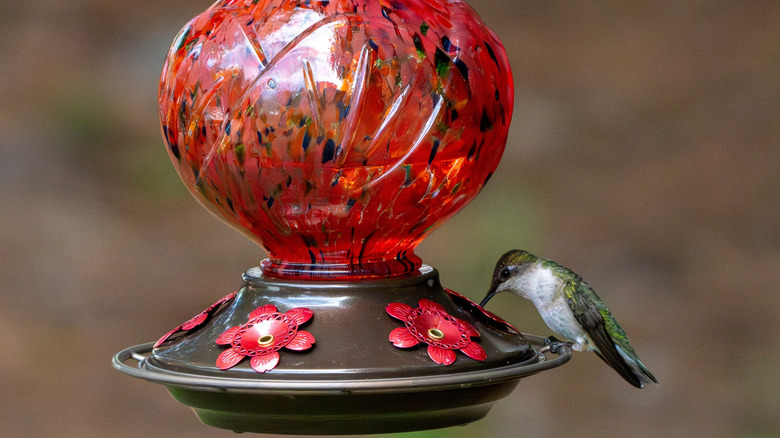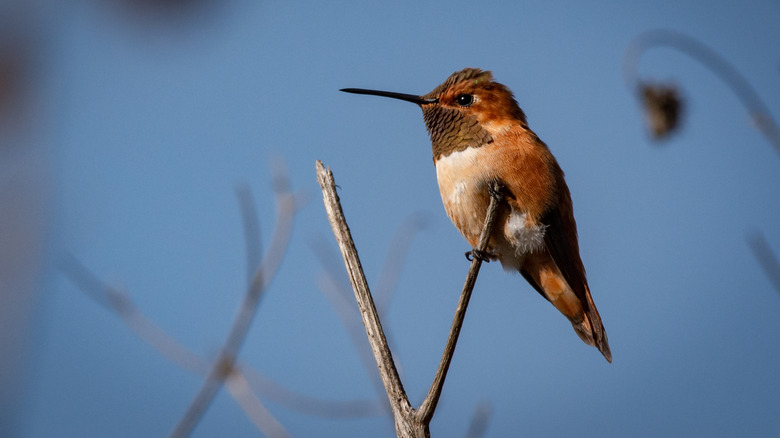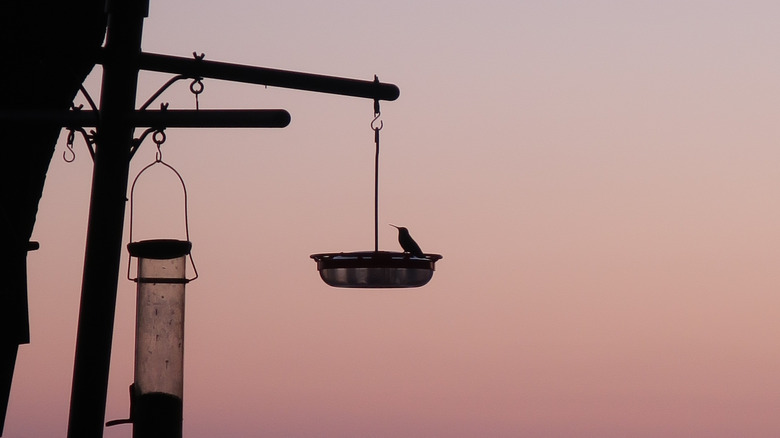When To Take Hummingbird Feeders Down (And Why Timing Is So Important)
After enjoying pretty hummingbirds at the feeder all summer, you might be asking yourself when is the right time to take the feeder down for the winter? Don't rush to do this too soon, as migrating hummingbirds can benefit from a snack on their long journey to warm weather. In colder climates, conventional wisdom says you ought to take down your feeders straight away after summer because you'll risk confusing the birds and encouraging them to overstay their welcome, thus missing their migration window.
However, this isn't true. Hummingbirds generally don't use scarcity of food as a cue to migrate. They don't use cold weather as a sign, either. They migrate based on waning sunlight, which causes chemical and hormonal changes in their body. The first change is a desire to eat more.
If you live in colder zones in the Midwest or Northeast, then hummingbirds will migrate south for the winter, sometimes as far as 5,500 miles down to Mexico or Central America. Some hummingbirds will stay in deep southern states all winter long, especially along the Gulf coast. If you live in one of these areas, you can keep up hummingbird feeders all winter long. Otherwise, you'll want to keep feeders up for at least a couple of weeks after you see the last hummingbird in your yard, and a good rule of thumb might be to keep it up even until early winter to help migrating stragglers.
Why hummingbird feeders are important in fall
It's no easy task for hummingbirds to bulk up for the long trip ahead of them. Hummingbirds have the highest metabolic rate in the animal kingdom, making it hard for them to gain and keep the weight they need for migration. And that's even with a diet that consists of mostly sugar water.
When other kinds of migrating birds find food scarce along their route, they'll likely just grow skinny and stressed. But not finding enough nutrients during migration can mean death for the small hummingbird. It's no wonder since some breeds, like the Rufous hummingbird, have to make a journey all the way from Alaska to Mexico every fall. So if you keep out your store-bought feeder, or even learn to make a hummingbird feeder yourself, this sugar water can be a literal lifesaver.
Hummingbirds often make pit stops in your yard in the early fall during their trip south. Know, too, that hummingbirds can change their migration patterns slightly every year, so you might end up with a new crop of birds coming through this season on their way to warmer weather. The Calliope hummingbird, for instance, can shift its flight pattern by more than 300 miles east or west from year to year. Plus, parts of the hummingbirds' migration trek, like regions in the Southwest, are becoming drier and hotter, making them more challenging to cross. Climate change also has made some tried and true wildflowers scarce in their migratory paths, which can make feeders even more important.
Do this with your hummingbird feeders in the fall
With fewer flowers for hummingbirds to feed on, that means there's more competition from bees and wasps for what food remains. If you find wasps swarming your hummingbird feeder, you can learn tips for guarding your hummingbird feeder from wasps. Once you shoo the stinging insects away, don't forget to keep your hummingbird feeder clean, even as the weather begins to cool. It's still important to switch out nectar and clean feeders every few days to avoid bacteria growth.
Also, if you live in a climate where the nectar might freeze overnight, you might consider bringing the feeder inside in the evening so it doesn't turn into a block of ice. Frozen nectar is hard to consume, but it's a myth that cold nectar can stun birds. If you see a sluggish hummingbird, it might be in a torpor state, which is when it lowers its own body temperature and heart rate to survive. Torpor isn't usually caused by cold nectar. It's triggered by falling fat levels and is used as a way for the bird to conserve what stores of energy it has left. Torpor typically doesn't last very long – usually only a few hours.
After winter has truly set in and all migrators have passed through, you can bring in your feeder for the winter. Then, wait for spring. They'll come back to nest, and you might find them looking for the fuzzy plant in your yard that hummingbirds love for nest-building.


